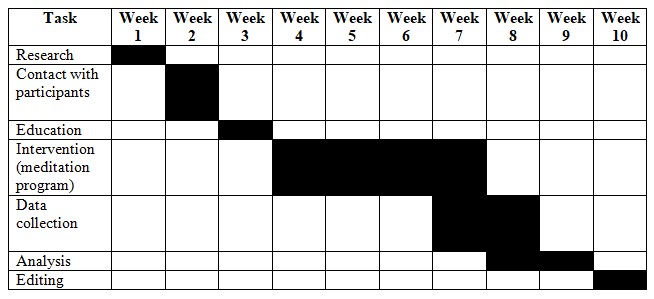Introduction
In this DNP project, several questionnaires are used as the main evaluation tool. In a self-administrated questionnaire, there are four issues for analysis (gender, age, nursing experience, and duties) that contain nominal scales with the help of which variables are labeled without any quantitative value (numerical significance). The other two questionnaires, the ENSS and SF-12, aim at gathering ordinal scales. The main characteristic of ordinal data of these evaluation tools is the presence of the values’ order (not quality differences). These scales are applied to measure non-numeric concepts, including stress and satisfaction.
Despite the intention to plan each step and predict the type of data, in any DNP or research project, extraneous variables cannot be ignored. These unwanted factors prevent finding the relation between dependent and independent variables and measuring the results. To control such variables, it is expected to minimize differences between participants (nurses of the same age group who work at the same facility), to invite the same educator (not to cause various participants’ reactions), and to create a similar environment for all practices. Finally, statistical control (via the ANOVA statistical tool) helps to reduce the impact of extraneous variables.
The analysis of quantitative data obtained from a self-administrated questionnaire is based on the application of descriptive statistics. With the help of this questionnaire, the researcher proves the appropriateness (meeting the inclusion criteria) of the participants to the project. The results of the SF-12 questionnaire will be analyzed by means of a linear regression analysis. This type of analysis allows to include several parameters (gender, position, or age) that can predict better outcomes (Pandis, 2016). The same test is taken before and after the intervention within one group of nurses. Another group of nurses does not participate (knows nothing about) in the program but has to work under similar pandemic conditions. As well as many studies about the levels of stress among medical employees, this DNP data analysis will be organized in the Microsoft Office Excel program (SPSS), where the answers of the participants will be divided into categories defined after descriptive statistical analysis (Adzakpah et al., 2016). Linear regression makes it possible to identify the relationship between one interval predictor (a mindfulness meditation program) and one expected outcome (stress reduction and well-being among nurses).
Project Management Plan and Gantt Chart
Ten weeks are chosen for a total implementation timeframe, including research, communication with hospital workers, education of nurses, implementation of the intervention, the analysis of the results, and editing of the gathered material. Below there is a Gantt chart to identify periods for each task of the DNP project. This chart contains an overview of the evaluation process with its formative and summative evaluation. Formative evaluation focuses on the issues that foster the development and improvement of the activity (participants and a program), and summative assessment includes the analysis of the outcomes (a program and participants’ conditions).

The first week will be devoted to gathering and evaluation of the already-known facts about mindfulness meditation among nurses and the peculiarities of the pandemic situation. Then, one week is offered to choose a hospital, find participants, and contact with the hospital employees to discuss the details of the study. The third week will be used for educational purposes when nurses approved for the study cooperate with an educator and learn the basics of medication to reduce stress. The next four weeks are for intervention implementation, and the last three weeks include data collection, analysis, and editing.
Proposed Budget
Attention should be paid to the financial aspects of the intervention due to the required resources (both human and material) and expected outcomes and contributions. As it is shown in Table 1, the expenses that include direct and indirect costs to hire a professional meditation coach and a statistician may be covered by revenues (billing, grants, and institutional support). In addition, one should admit that the possibility to reduce stress levels among nurses will contribute to the reduction of costs on medications for nurses to support their well-being. As soon as positive outcomes are proven, it is possible that the government or hospital administrators share their interest in the program. They could invest in health care and support nurses in their duty to cooperate with high-mortality patients during a pandemic.
Table 1: Budget
Ethical Issues and Considerations
One of the critical elements of this DNP project is the promotion of voluntary participation of nurses. The results of this intervention depend on nurses and their willingness to learn something new and meditate. However, it is necessary to provide the participants with guarantees to withdraw the study any time they want without fines and additional explanations. In Chamberlain University, the Institutional Review Board (IRB) is a committee that aims at reviewing and approving research where human subjects participate. Its purpose is to ensure that all federal, institutional, and ethical regulations are followed. Before the intervention, the researcher gets approval from the board and introduces informed consent to be signed by every nurse individually. In terms of this agreement, human rights and privacy issues are discussed. All personal information remains confidential, and the answers to questionnaires are anonymous. The data will be kept for the next seven years digitally, and no one except the researcher has access to it.
References
Adzakpah, G., Laar, A. S., & Fiadjoe, H. S. (2016). Occupational stress among nurses in a hospital setting in Ghana. Clinical Case Reports and Reviews, 2(2), 333-338. Web.
Pandis, N. (2016). Multiple linear regression analysis. American Journal of Orthodontics and Dentofacial Orthopedics, 149(4), 581.